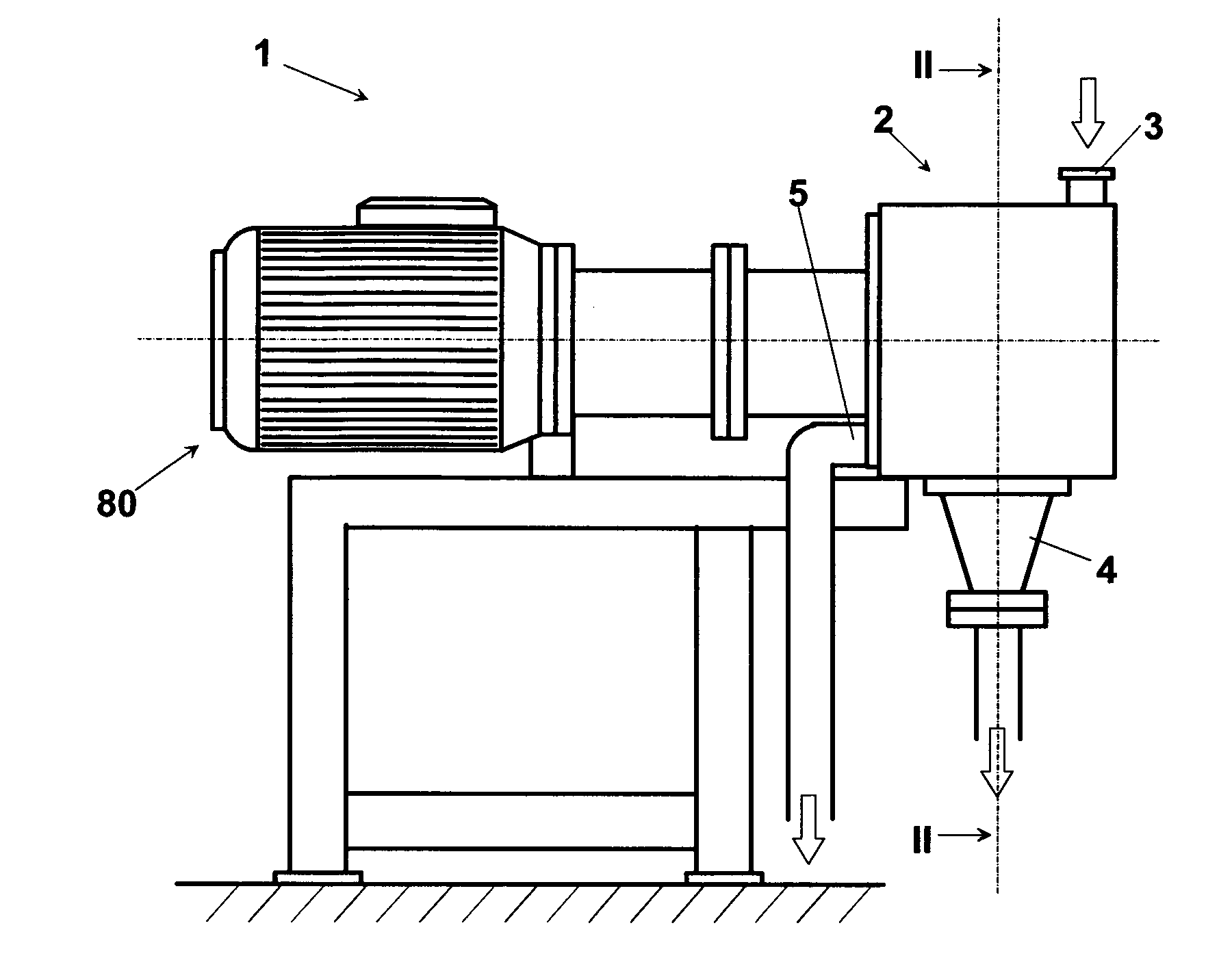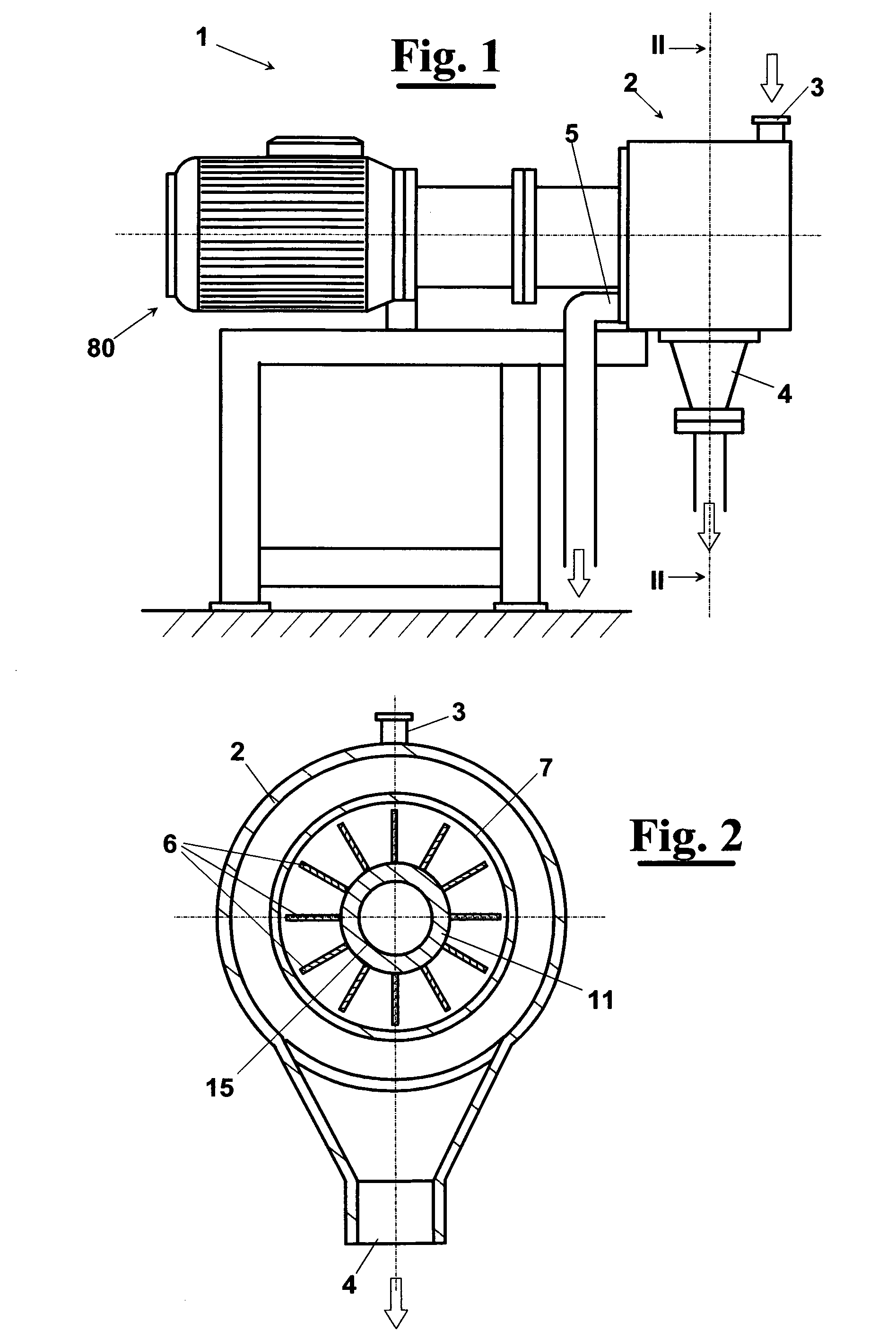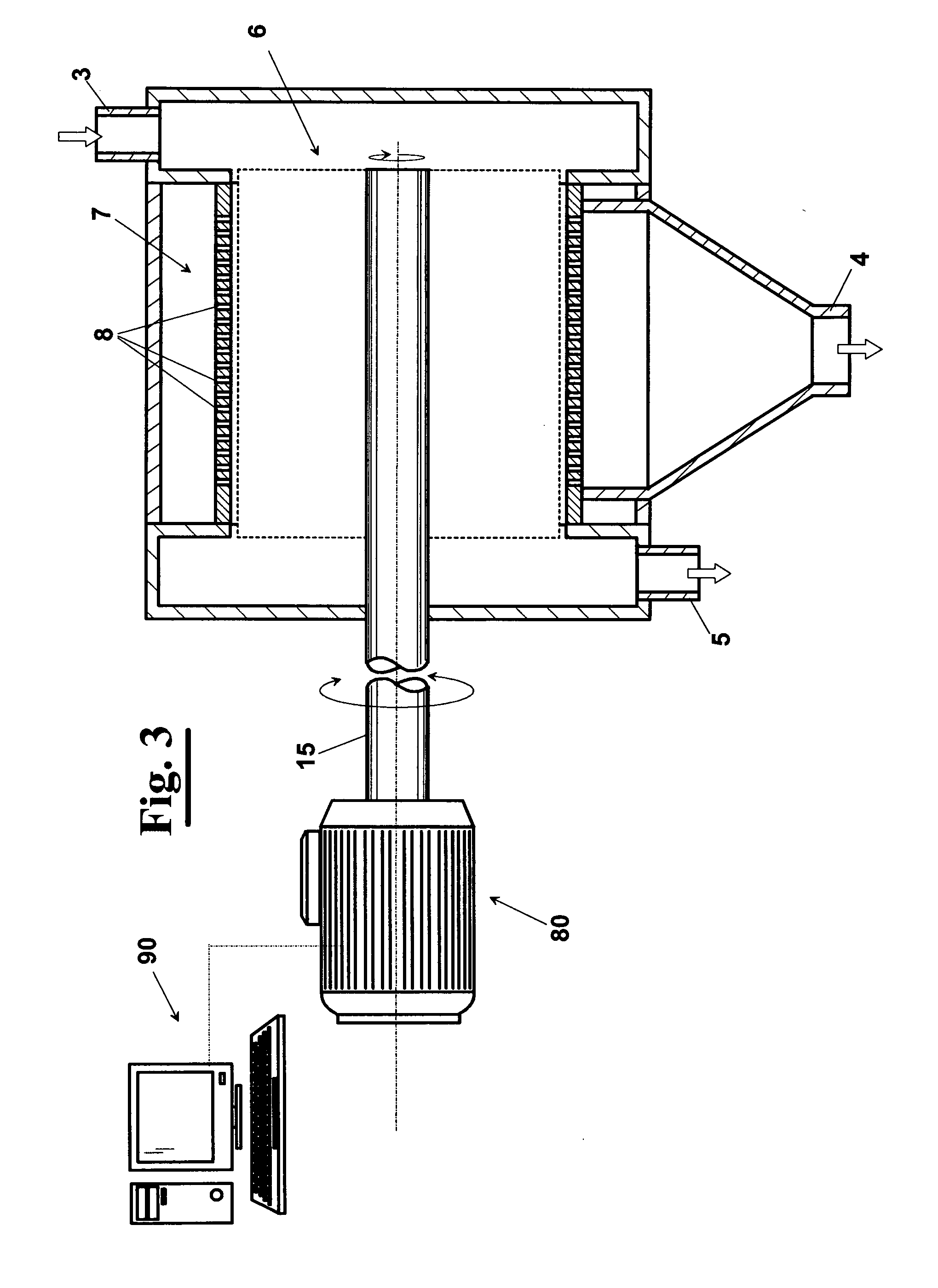Machine for extracting puree or juice from an animal or a vegetable product with high efficiency and low consumption
a technology of vegetable or animal food and machine, which is applied in the field of machines for the food industry, can solve the problems of high energy consumption, high energy consumption, and strong friction on the sieve, and achieve the effect of high extraction process efficiency
- Summary
- Abstract
- Description
- Claims
- Application Information
AI Technical Summary
Benefits of technology
Problems solved by technology
Method used
Image
Examples
Embodiment Construction
[0071]In FIG. 1 for example a possible machine 1 is shown that is used in plants for making puree, or fruit juice, starting from vegetable or animal food, such as an extractor, or a fine extractor, according to the invention. It comprises essentially a cylindrical body 2 having an inlet 3 for the product to treat, an outlet 4 for a part of the product that can be used, and a outlet 5 for a part of the product to dispose of.
[0072]Machine 1 has a rotor 6, whose encumbrance is diagrammatically shown with a dashed line in FIG. 3, and which is connected to a motor 80 by a shaft 15. The product that is put into cylindrical body 2 of machine 1 is then pushed by centrifugal force by a plurality of blades 20 of rotor 6, which cause it to pass through a sieve 7 having cylindrical or conical shape and having holes 8 of measured dimension
[0073]According to the invention and as shown in FIG. 4A, blades 20 of rotor 6 comprise a first portion 21, i.e. a portion nearer to the root of blade 20, with...
PUM
 Login to View More
Login to View More Abstract
Description
Claims
Application Information
 Login to View More
Login to View More - R&D
- Intellectual Property
- Life Sciences
- Materials
- Tech Scout
- Unparalleled Data Quality
- Higher Quality Content
- 60% Fewer Hallucinations
Browse by: Latest US Patents, China's latest patents, Technical Efficacy Thesaurus, Application Domain, Technology Topic, Popular Technical Reports.
© 2025 PatSnap. All rights reserved.Legal|Privacy policy|Modern Slavery Act Transparency Statement|Sitemap|About US| Contact US: help@patsnap.com



